Let's Go Crazy
In which Norm catches up to last month's 4K upgrades of AMERICAN GIGOLO, MUTE WITNESS, PURPLE RAIN and SOUTH PARK: BIGGER, LONGER & UNCUT.
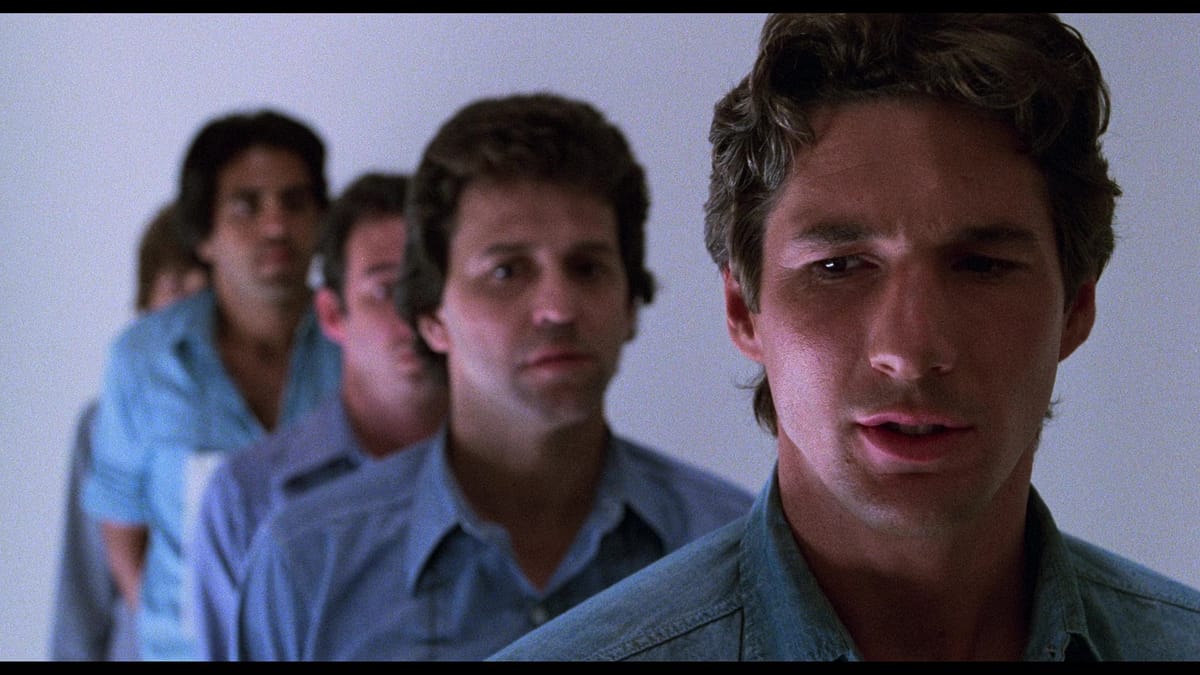
When I started writing this one, I thought “eh, there’s a lot to cover, I’ll do it digest-style.” That was two thousand words ago. I am who I am, I guess.
Earlier this spring, Paul Schrader and Richard Gere went to Cannes with O, Canada, their first picture together in over forty years. So it’s the ideal time for Arrow to roll out a new edition of their initial collaboration: American Gigolo.
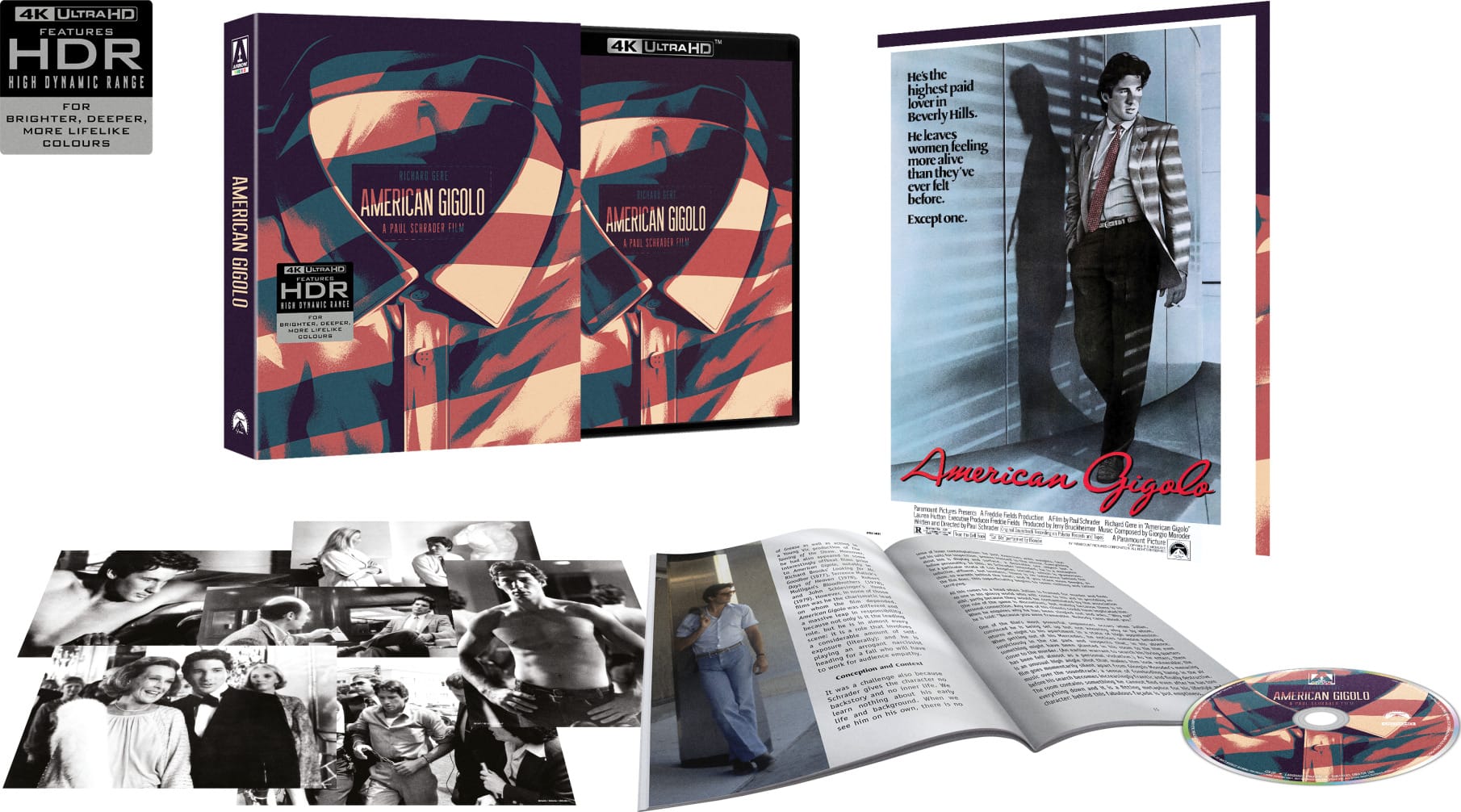
Any Jerry Bruckheimer production is going to be a time capsule of its moment, but American Gigolo definitely captures something about America’s hedonistic ways just before Ronald Reagan let the fundamentalists back into the ballroom. And in Gere, Schrader found just the right sex symbol to define that moment.
Before the military musclemania of Commando and Rambo: First Blood Part II took pop filmmaking in a more jacked direction in 1985, Gere’s cold-blooded, almost reptilian poise set so much of the tone for screen masculinity in the first half of the ’80s. He’d warm up a little in An Officer and a Gentleman, but the die was cast: I’d be willing to bet Michael Mann went through a couple of prints of Schrader’s picture while developing Miami Vice and Manhunter.
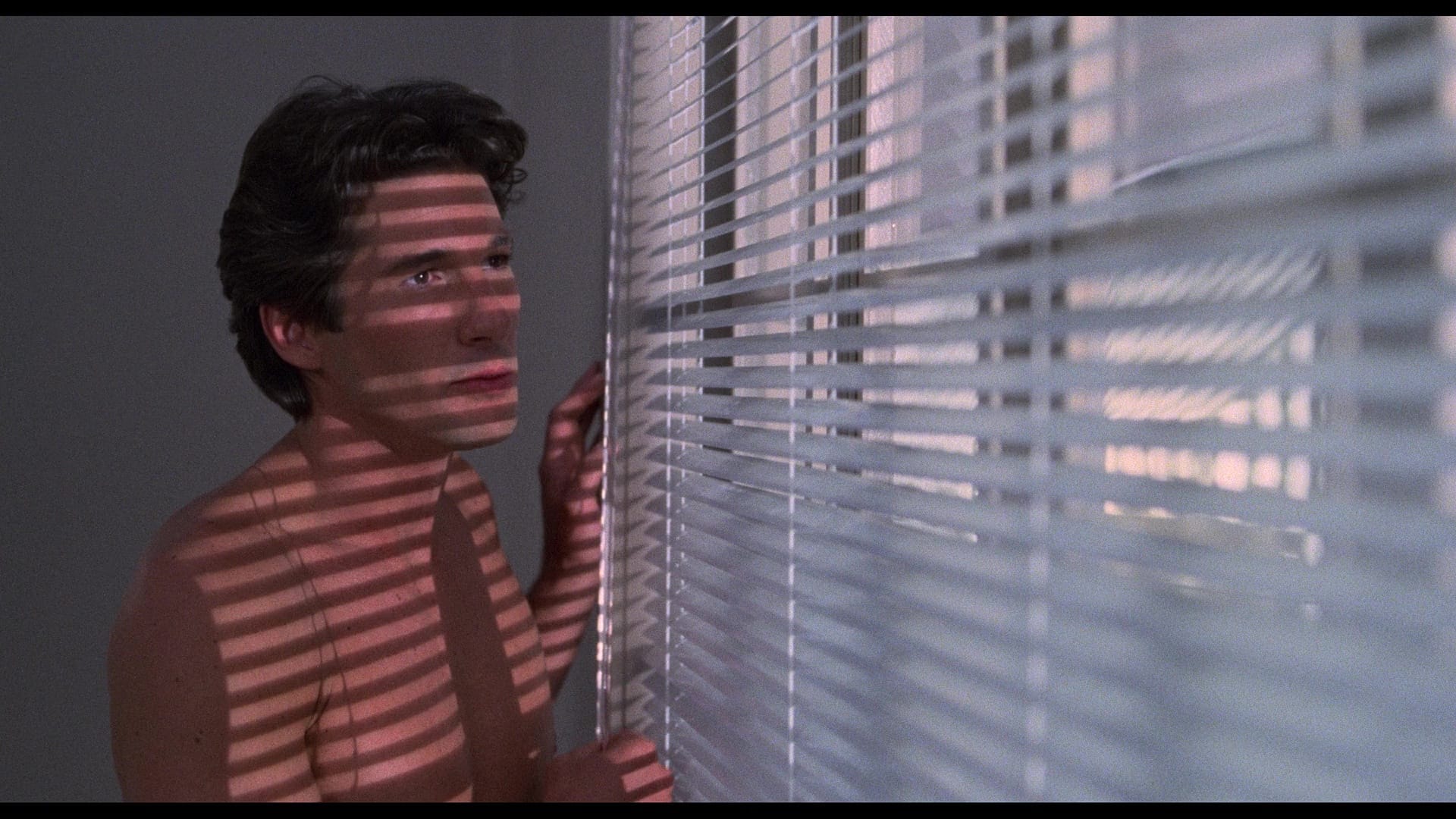
With his script for Taxi Driver, Schrader gave a decaying Manhattan the savior it deserved; his subsequent directorial projects Blue Collar and Hardcore examined the American ills of labor and pornography. In American Gigolo he attempted to call bullshit on Los Angeles as a culture capital: Turns out everyone’s on coke and out for themselves, just like the rest of us!
In fairness, there’s a little more to the narrative than that; Gere’s easygoing hustler Julian Kay is another of Schrader’s isolated warriors, a (literal) pro at pleasuring women but perpetually unsatisfied himself. When a client is murdered, Julian finds himself the prime suspect; his race to clear his name becomes a journey to reclaim his own soul, assuming he can even find it.
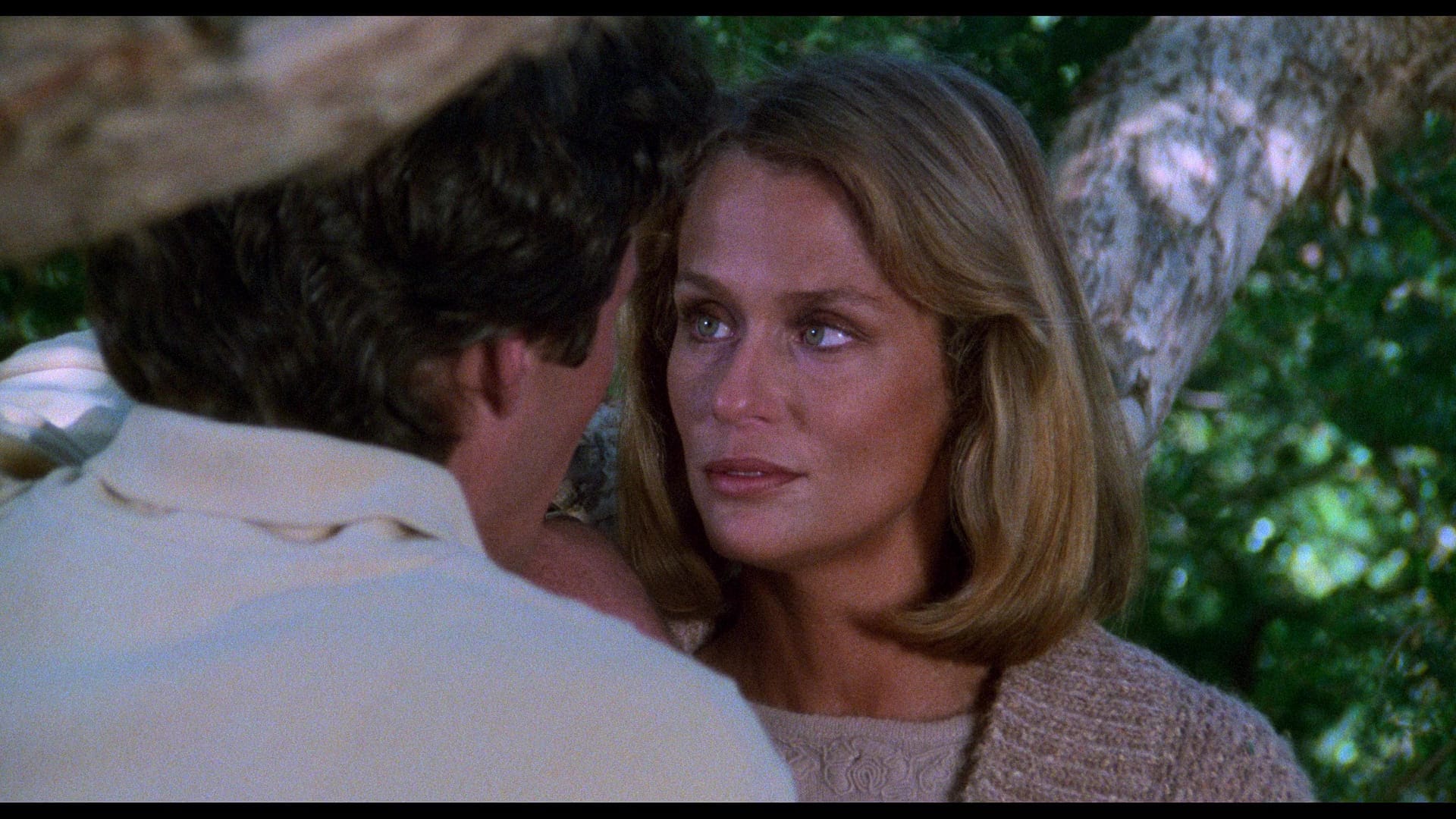
It’s a drama, it’s a thriller, it’s a mystery – mostly, though, American Gigolo is a mood piece. Gere is the ideal lead, filling his Armani wardrobe perfectly while suggesting there’s nothing at all inside, and Lauren Hutton – who was still primarily known as a model when she was cast – provides enough life for both of them as a woman who starts an affair with Julian when he’s off the clock, then has to weigh her marriage against his freedom as the net closes in around him. Plus, there’s Bill Duke as Julian’s even more dead-eyed manager Leon, and that guy rules.
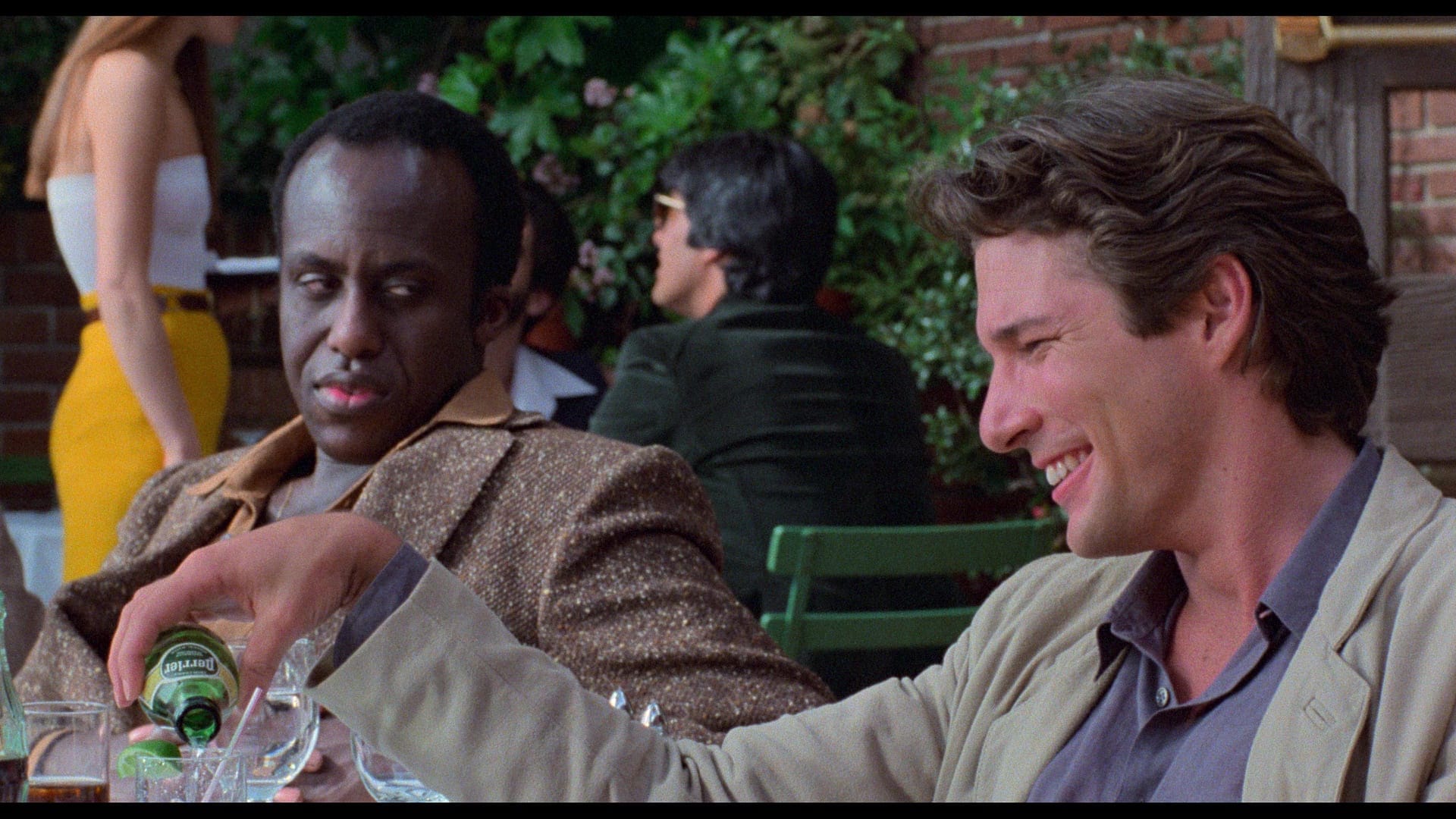
Mastered from the original camera negative, Arrow’s restoration – available in separate 4K and Blu-ray special editions – is so clean you could do a line off of it. John Bailey’s imagery defined the L.A. neo-noir look as well as anything Mann ever shot; he died last fall, but Arrow did get his camera operator, King Baggot, to sit down for a featurette. There are also new interviews with co-stars Duke and Hector Elizondo – both of them Hollywood lifers at this point, of course – and editor Richard Halsey and Schrader himself; Dan Wilcox discusses Giorgio Moroder’s score and academic Jennifer Clark speaks to the film’s fashion sense, and critic Adrian Martin provides a retrospective audio commentary.
I’m running out of ways to say “Arrow makes a pretty good special edition” these days, but you know what? They do, and this is.
Arrow’s also made a pretty good special edition out of Anthony Waller’s Mute Witness, thought the film itself feels a little less essential.
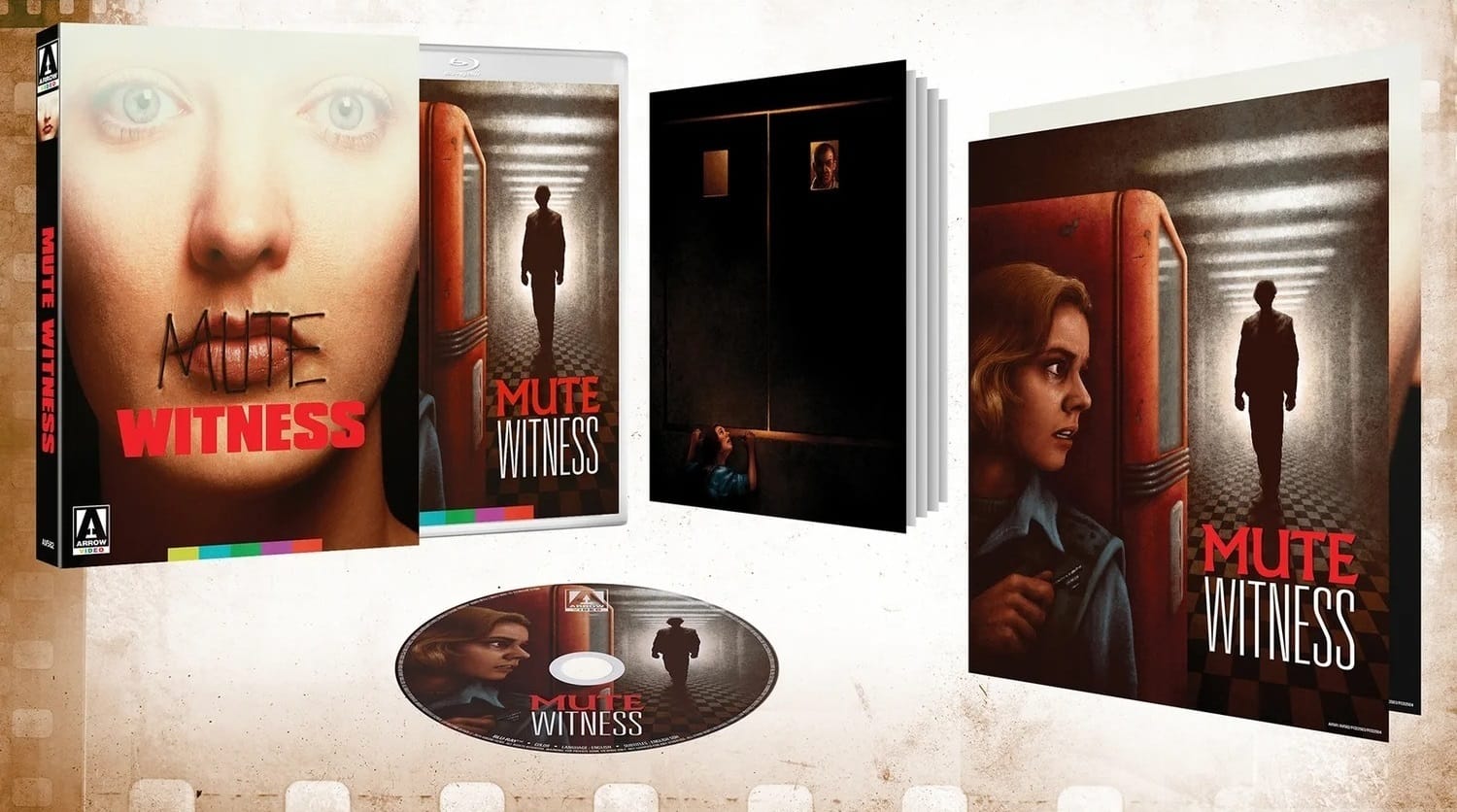
Made on a shoestring in post-Soviet Moscow, it’s a pleasantly pulpy cat-and-mouse thriller starring Maria Sudina as Billy, a mute effects artist who discovers her studio is being used by the local mob to shoot snuff films and spends a harrowing night trying to find someone who'll believe her ... and isn't in on it themselves.
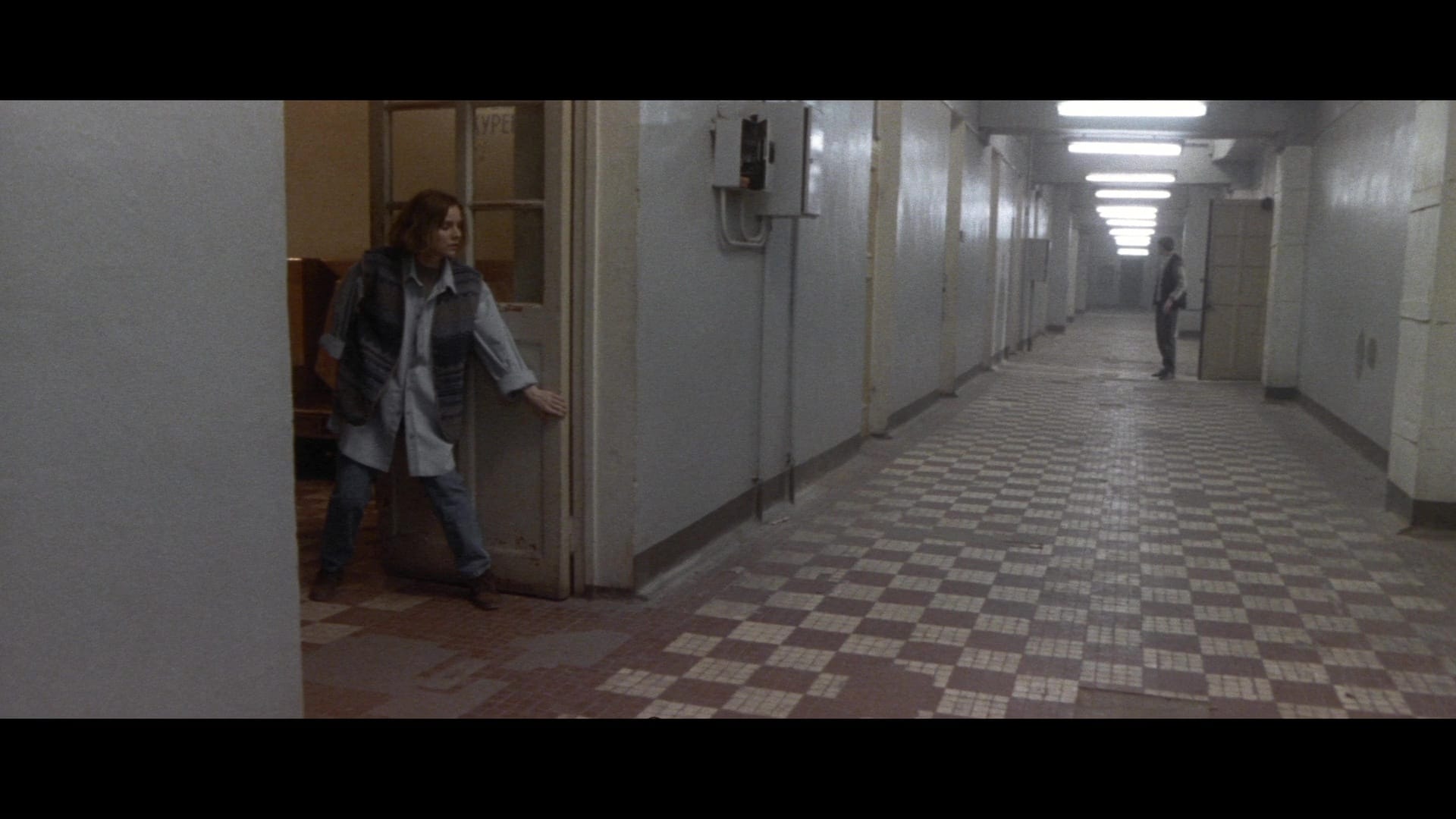
Waller’s goal was to update the Hitchcockian thriller for 1995 audiences, and while he mostly just succeeded in drawing unfavorable comparisons to the genre, Mute Witness has a fun, seat-of-the-pants energy that makes you want to root for it, and for Billy, even as you acknowledge this isn’t exactly the second coming of Sir Alfred; Scream is just a year away, after all.
But it’s very watchable, and Waller’s resourcefulness is impressive – even more so when one learns the special appearance by Alec Guinness was shot in a hotel driveway a decade earlier, when Waller had a chance meeting with the living legend and convinced him to read a couple of generic lines for a project to be named later. That’s cinema, man.
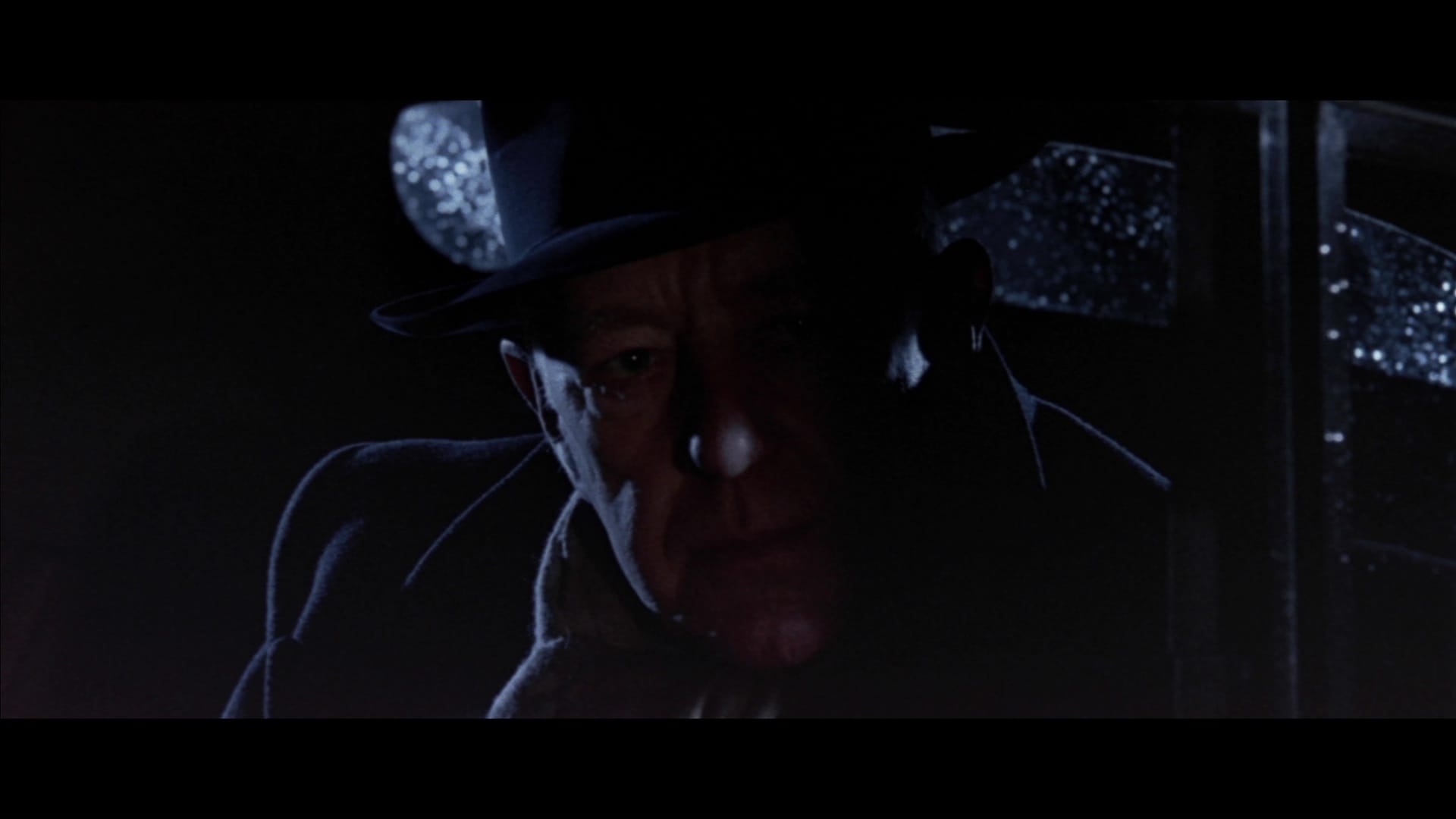
Two audio commentaries – one with Waller, and another with production designer Matthias Kammermeier, composer Wilbert Hirsch and critic Lee Gambin – spend a great deal of time discussing the seat-of-the-pants nature of the production, including the way Waller and company packaged the project for investors and distributors as a sure-fire genre hit under the title Snuff Movie. Their proof-of-concept sales reel, produced for film markets, is also included, along with the complete Guinness footage – all two and a half minutes of it – and clips from an early location scout in Boston, shot before the production set its eyes on Moscow.
Arrow also commissioned two visual essays: In “The Silent Death”, Alexandra Heller-Nicholas considers Mute Witness in the context of the urban legends surrounding snuff movies, while Chris Alexander’s “The Wizard Behind the Curtain” explores the use of the film-within-a-film device in genre cinema.
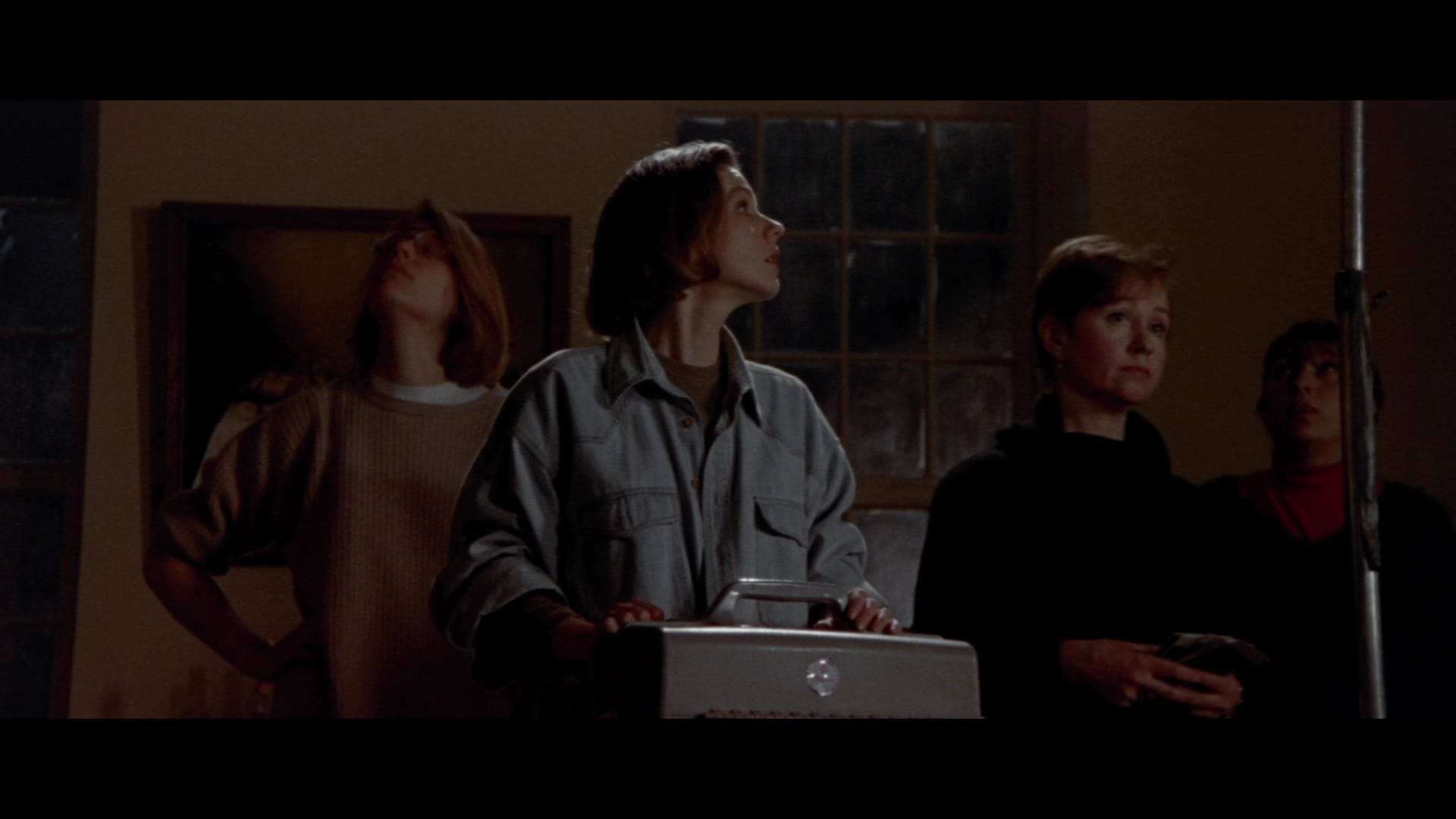
As for the feature, Arrow’s restoration of Mute Witness is a little less pristine than American Gigolo; it’s clear that Arrow didn’t or couldn’t go back to the negative for this one. Either an interpositive or a dupe print was used, and the resulting master shows the slightest signs of wear here and there – judder in the credits, additional graininess in the opticals, etc. That’s not necessarily a bad thing; honestly, the 4K presentation of Mute Witness looks just as I remember it at its Midnight Madness premiere in 1995. The restored stereo soundtrack, on the other hand, sounds like it was just mixed yesterday.
Being Arrow’s latest limited editions, both American Gigolo and Mute Witness are packaged all fancy; Gigolo comes packaged with six art cards and an essay booklet, while Witness gets a foldout poster and a booklet of its own. I respect the label’s effort to position itself as the nerdier version of Criterion; they’re definitely doing the work.
By contrast, Warner’s 40th anniversary 4K restoration of Purple Rain – which arrived on shelves last week – is a lot less frilly.
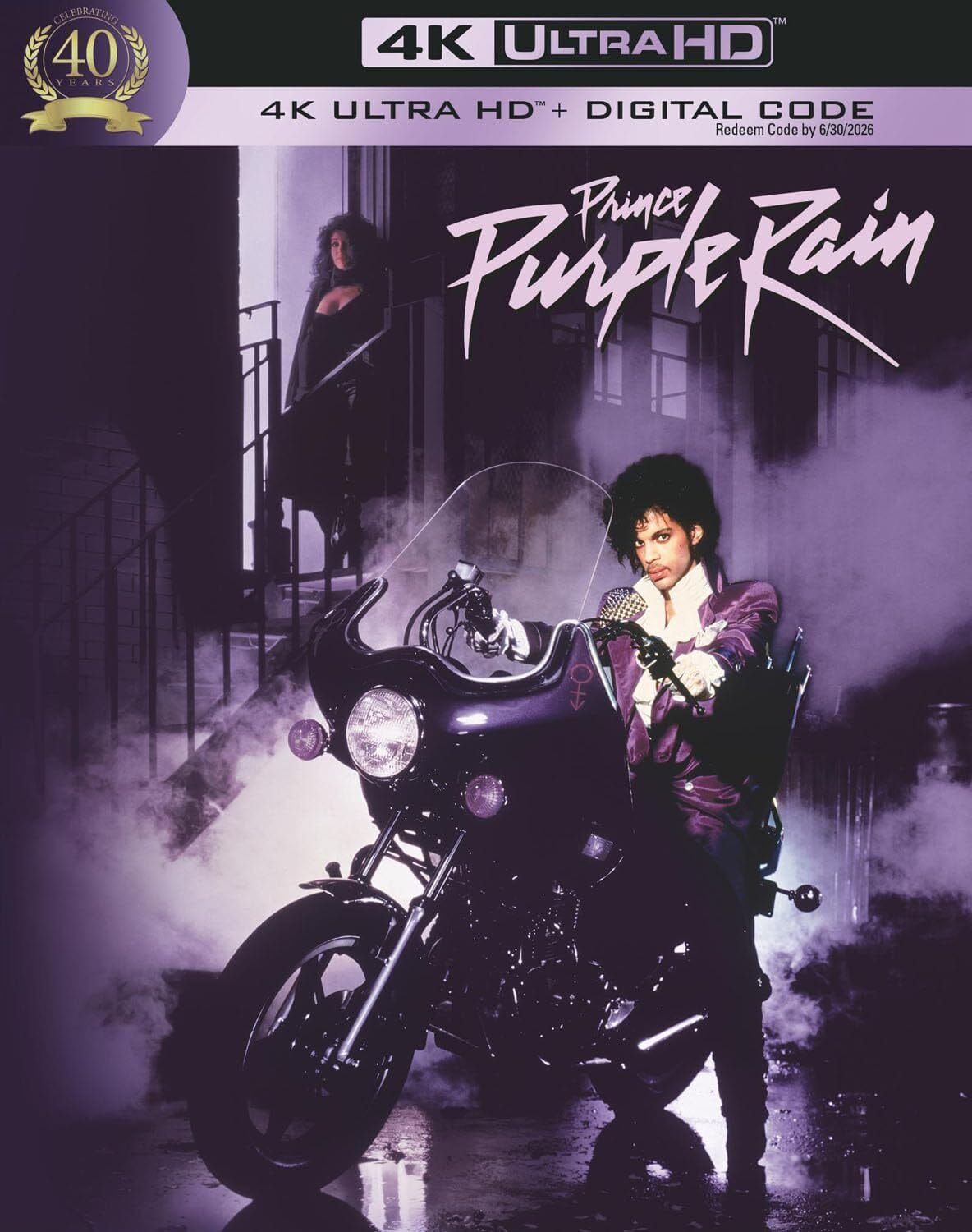
The studio's new release actually leaves out quite a few of the special features produced for earlier Blu-rays, bringing over just one of the featurettes on the original 2009 disc (“First Avenue: The Road to Pop Royalty”), the audio commentary by director Albert Magnoli, co-producer Robert Cavallo and DP Donald E. Thorin, and the suite of eight music videos by Prince, The Time and Apollonia 6.
The other featurettes – “Purple Rain: Backstage Pass”, “Riffs, Ruffles and a Revolution: The Legacy of Purple Rain” and an episode of MTV Premiere Party – are nowhere to be found, and neither is the theatrical trailer. (This is another reason why Warner’s decision to release 4K discs without a companion Blu-ray can feel so frustrating; no one would feel shortchanged if the existing BD, with its full complement of supplements, was included here.)
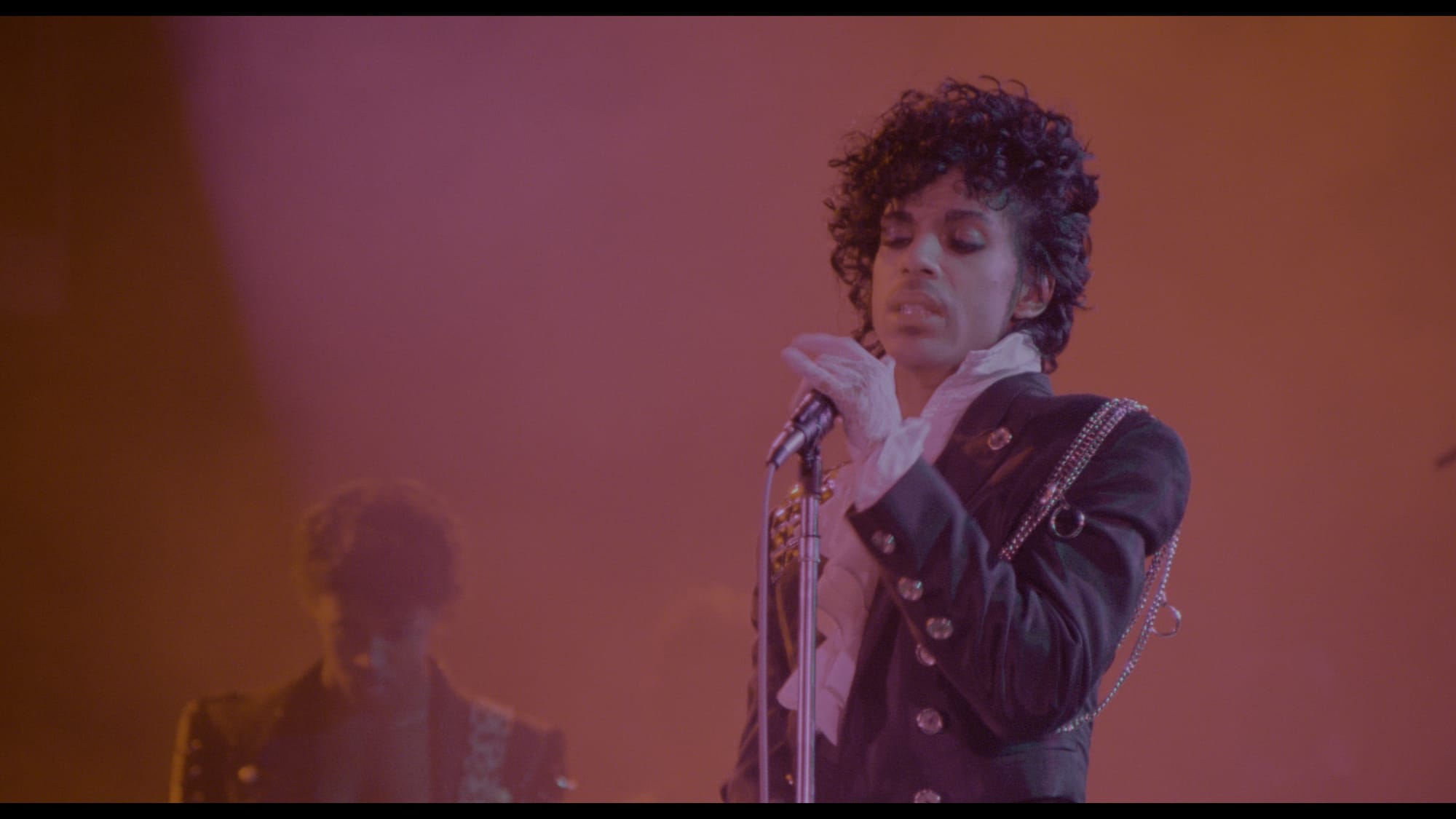
On the other hand, no one’s buying a 4K edition of Purple Rain for the special features. Like every other defining ’80s film, the movie is the prize – and the UHD restoration here, mastered from an 8K scan, is nothing short of spectacular.
The Blu-rays weren’t bad, but neither version really captured the visual energy that blasted off the screen in the 35mm prints; the theatrical experience of Purple Rain had a similar impact as Flashdance or Footloose or even Streets of Fire, with naturalistic scenes of daylit life giving way to the pulsing spectacle of performance. As you can see in the screen grabs – sampled from the actual 4K disc! – this version presents far brighter, more vivid colors than previous home-video presentations, and with HDR on top of that the club scenes leap off the screen.
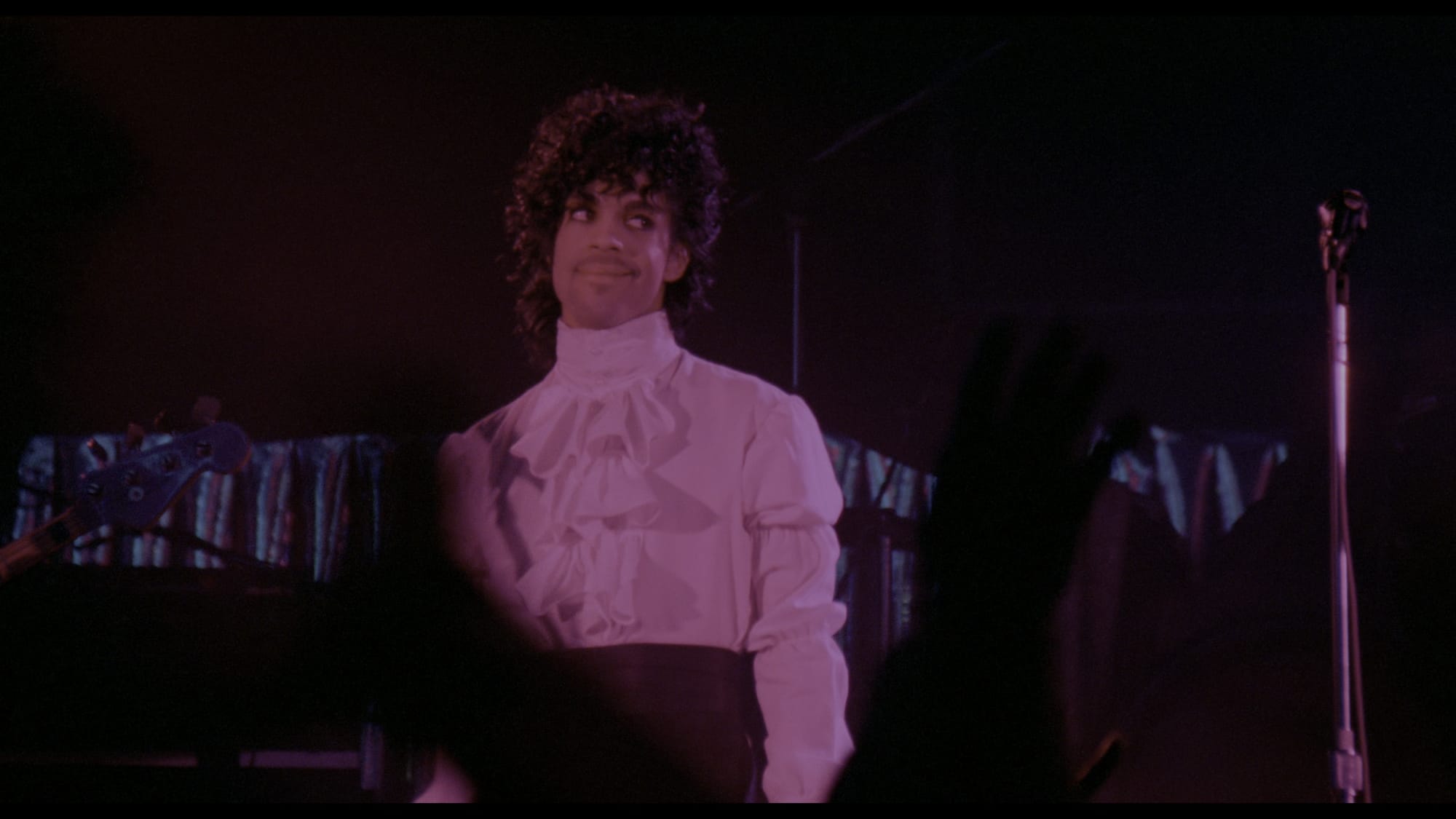
I mean, come on.
As a narrative, Purple Rain is … fine. Dramatically it’s pretty simple; Prince plays The Kid, an incandescent young talent determined to break out as a rock star without compromising his sexy, sexy art. He has a band, the Revolution, but his refusal to consider anyone else’s material alienates him from bandmates Wendy and Lisa, who allow themselves to be tempted away by the scheming Morris Day, who recruits them for a girl group to be fronted by The Kid’s own girlfriend, Appolonia.

The betrayals push The Kid to the brink, triggering memories of his father’s unfulfilled musical aspirations and descent into domestic violence. But since Purple Rain is basically a ’40s backstage musical – with wall-to-wall bangers, and quite a bit of the other sort of banging – everything works out okay in the end. And again, it looks and sounds fantastic – even in the original 2.0 stereo mix, presented here in DTS-MA.
If you’re looking for a more sophisticated musical, I have you covered. Paramount just rolled out a 25th anniversary 4K of South Park: Bigger, Longer & Uncut, which might be one of the best movie musicals … ever.
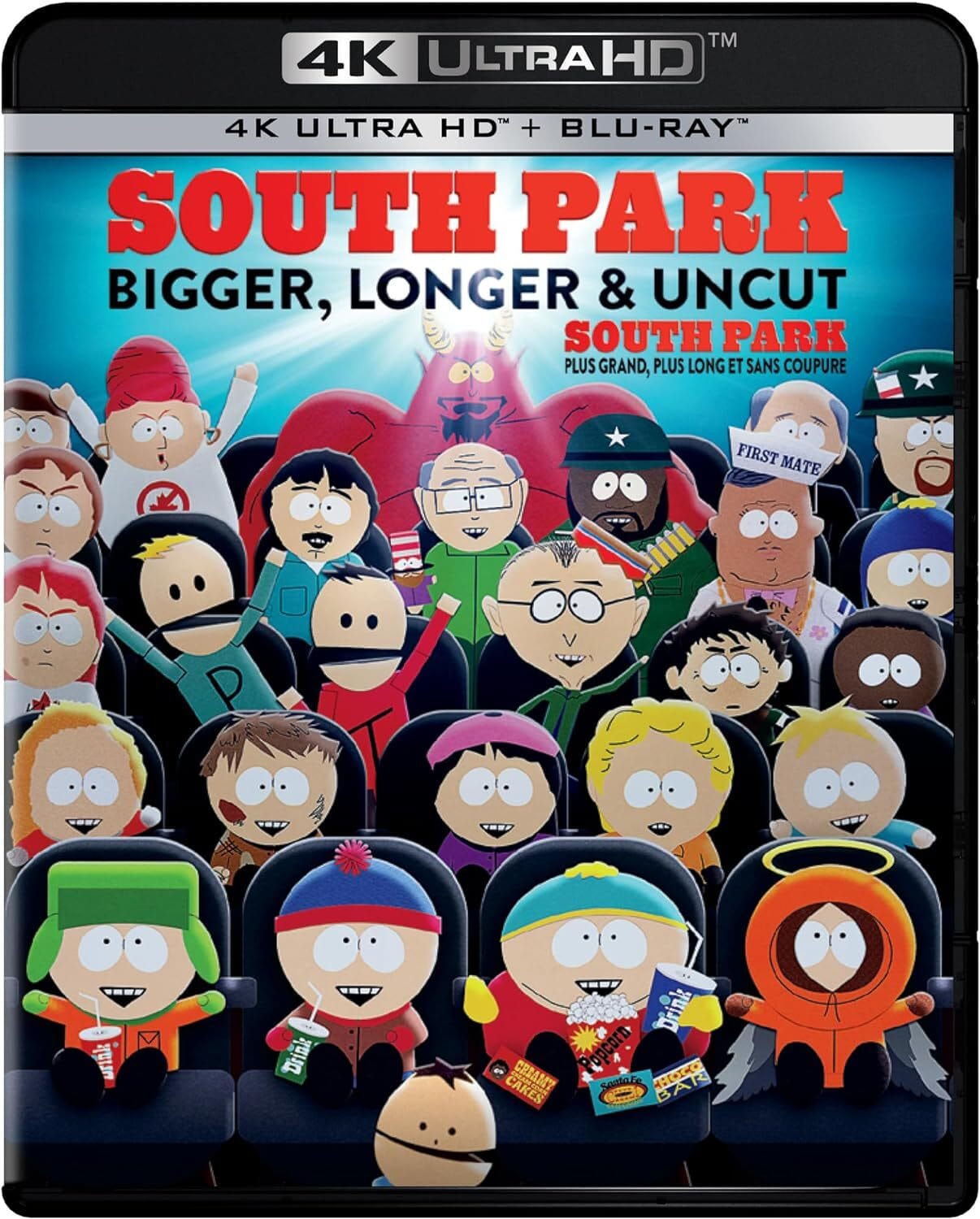
Look, if you weren’t there when Trey Parker and Matt Stone’s absolutely berserk feature expansion of their white-hot animated TV series first graced the big screen – with Stan Marsh’s catchy, upbeat and not-so-quietly subversive “Mountain Town” immediately letting audiences know that the film would be deconstructing the clichés of stage and movie musicals alike – you don’t really understand just how revelatory Bigger, Longer & Uncut was. It wasn’t that Parker and Stone had made a South Park movie; of course they did, a South Park movie was a sure thing.
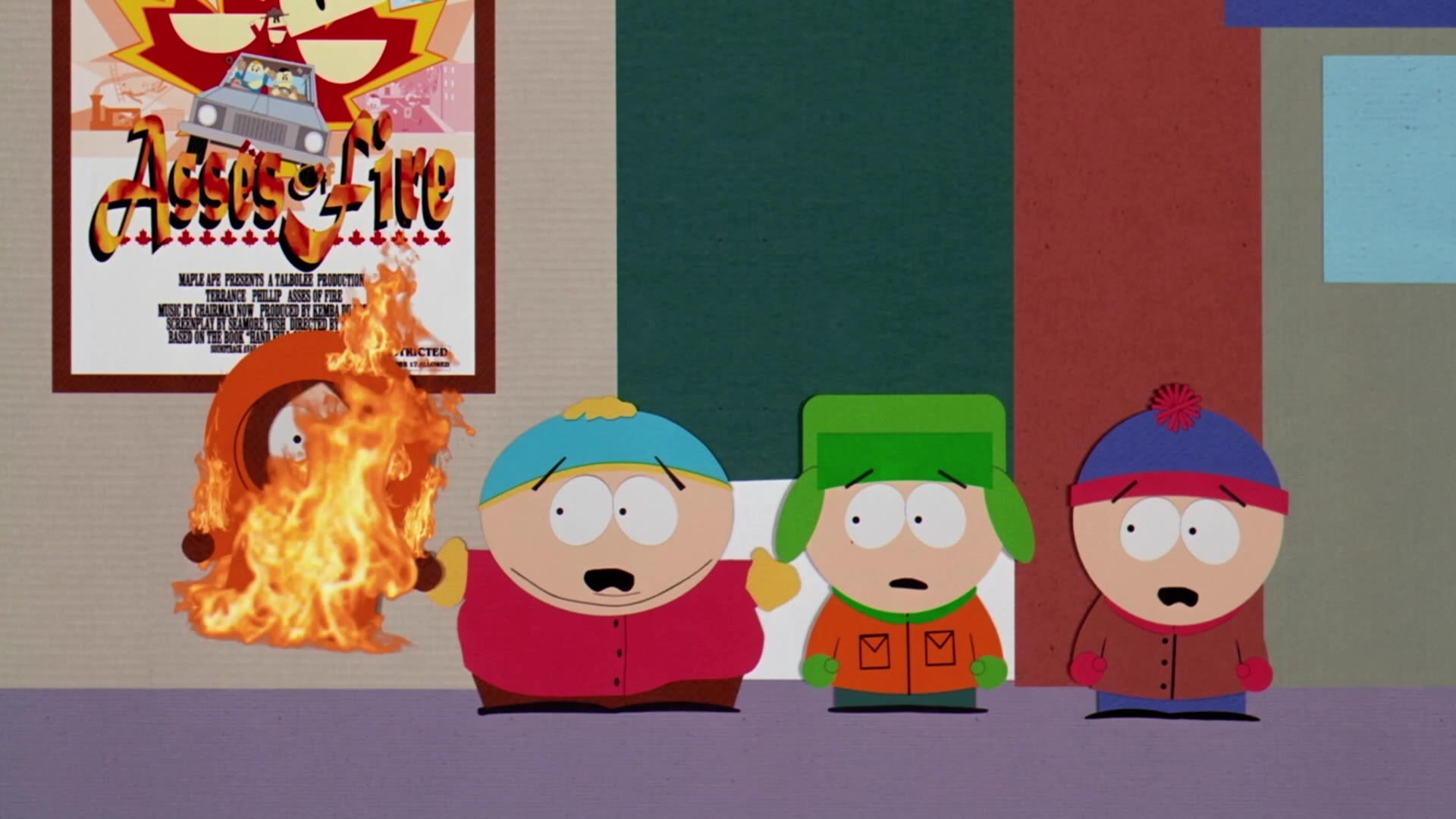
No, it was that the movie wasn’t just good, but truly great, with wall-to-wall earworms that somehow worked with the show’s construction-paper aesthetic and let it assume the scale of a full-on Broadway event musical. Parker and Stone mash up from Oklahoma! and Les Misérables and two-thirds of Disney’s musical catalogue and still create a coherent work of art that stands on its own, operating at a technical level their previous Cannibal! The Musical couldn’t even imagine, and they nail every single idea, joke and reference. I saw the damn thing five times that summer, and it always killed. It’s exhilarating cinema, and it holds up wonderfully: If you don’t get goosebumps when the choir starts humming in “Uncle Fucka”, I don’t know what to tell you.
Paramount’s 4K edition offers an excellent new transfer of the film, with HDR making the whole image look just a little darker, and revealing inconsistencies in the color timing that would have had to be deliberate choices, playing into the faux-handmade animation style. The audio is the same Dolby TrueHD track that appears on the 2009 Blu-ray; the idea of retrofitting a film that looks like it was made with paper and scissors with Dolby Atmos audio clearly proved too perverse for Paramount’s engineers.
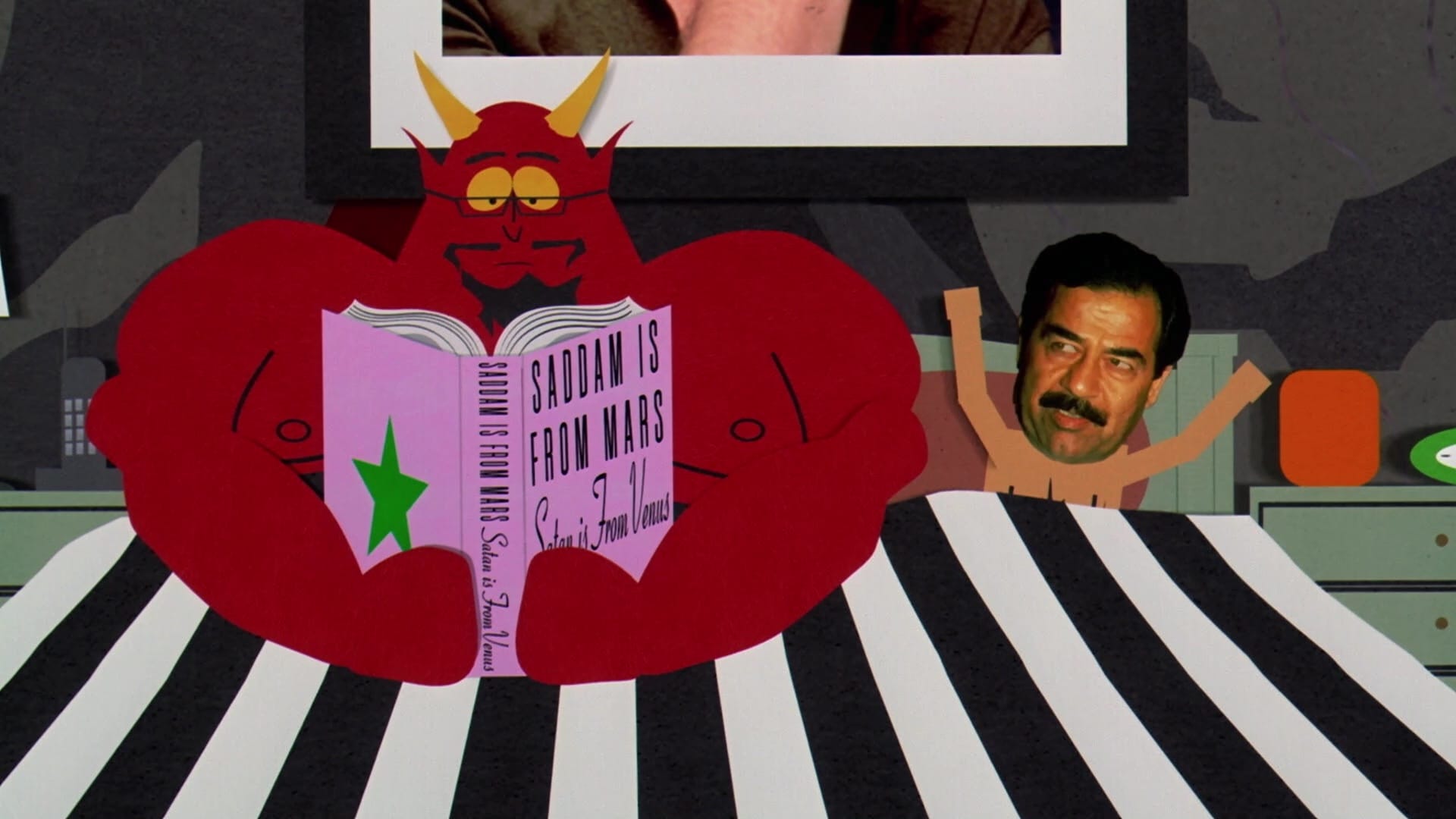
Unlike most of Paramount’s recent catalogue upgrades, this one does include a Blu-ray disc, which contains the handful of existing supplements produced for the original video release. There’s an anything-goes commentary where Parker and Stone basically leave the door open so anyone in their offices can wander in and contribute an observation or anecdote, a couple of trailers and the music video for DVDA’s punkified version of “What Would Brian Boitano Do”, all of which are very entertaining.
Oddly, the BD only offers the sing-along edition of the film, with hard-coded subtitles in the image; if you want the original theatrical presentation, that’s exclusive to the 4K. But don’t worry; whichever version you spin up, Satan and Kenny get their happy endings. As will you.
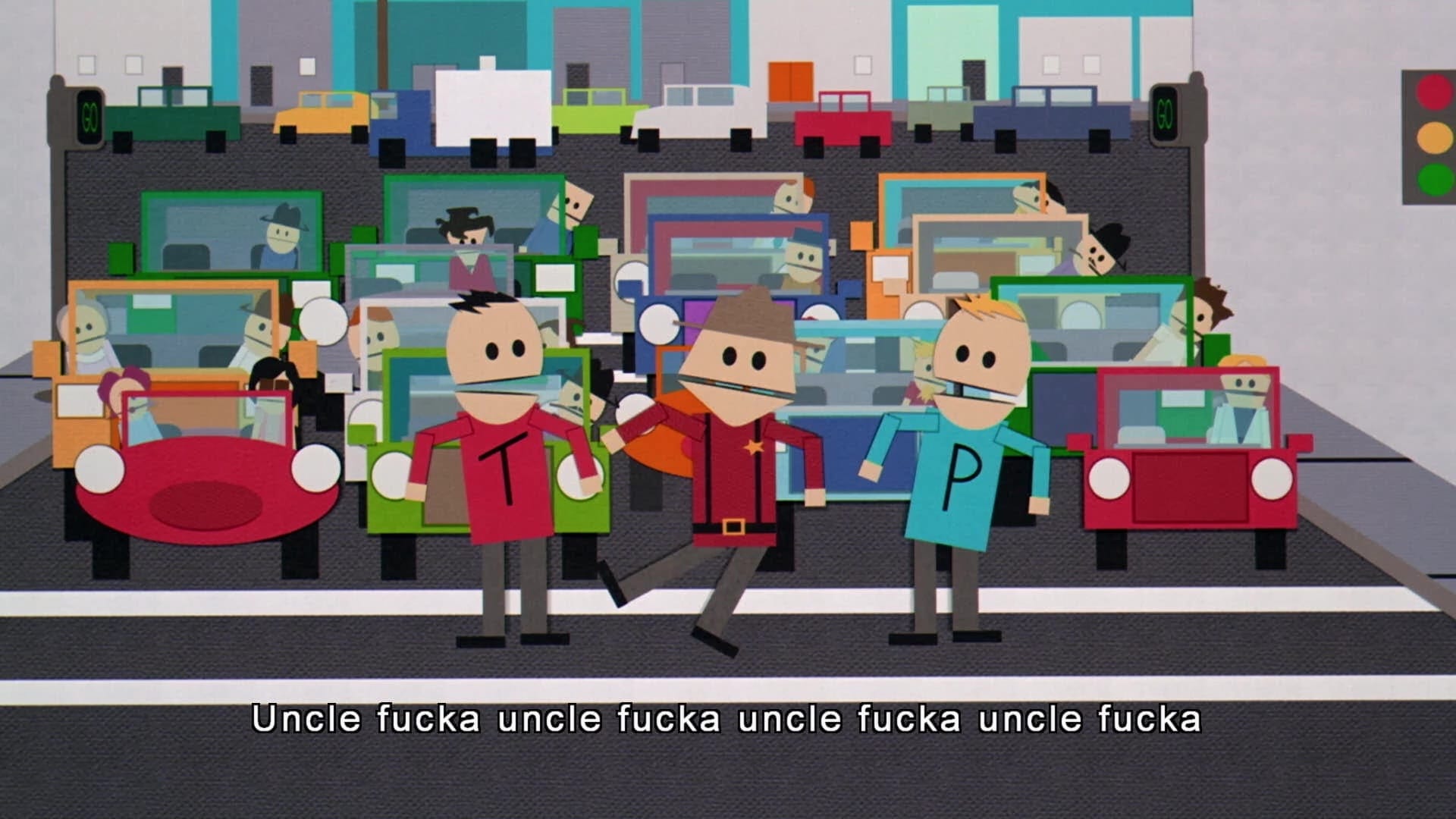
American Gigolo and Mute Witness are available in separate 4K and Blu-ray editions from Arrow Video; Purple Rain is available in 4K from Warner Home Entertainment, South Park: Bigger, Longer & Uncut is available in that weird 4K/BD combo I just described from Paramount Home Entertainment.
Coming next: Ghostbusters: Frozen Empire. Charge those proton packs, kids.
